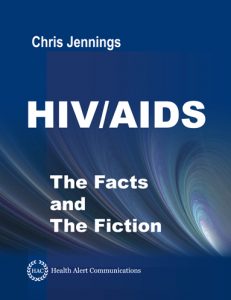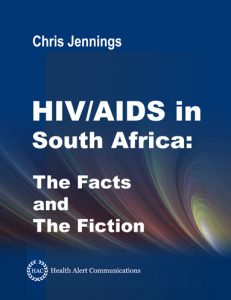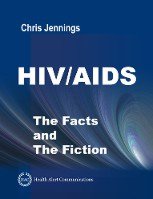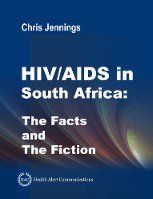
Currently, in Africa, the circumcision is being medically promoted and practiced as a method of preventing HIV transmission. The stated goals of some health care interventions are to circumcise all men aged 15 – 49 years of age.
This horrific practice is a prime example of hearsay and faddism amongst the medical and international health community: a belief structure and practice based on meager scientific evidence; and something that is considered justifiable in the Third World, while such practices are not being promoted nor implemented in developed nations.
The issue of circumcision as a form of HIV prevention is a big one, and requires a much larger discussion that can be presented in a single post. So consider this an installment of a series on this issue. As time permits, I will delve into the sometimes contradictory scientific and medical literature to garner and dissect the available knowledge base. However, in this post, I’m simply presenting the critiques of Ryan McAllister, PhD which are aptly described in his video presentation: Child Circumcision – The Elephant in the Hospital.
Ryan McAllister is a Research Assistant Professor in Biophysics at Georgetown University in Washington. Ryan McAllister is also the Executive Director of the educational organization NotJustSkin.org.
The belief is that circumcision protects men from HIV infection during sexual activity. The primary scientific justification for the use of circumcision as means of preventing HIV infection is a set of 3 randomized, controlled studies conducted in Africa. In his video presentation, Ryan McAllister succinctly describes the rather blatant faults of these studies. Although the whole lecture is very interesting, only the last few minutes discuss the use of circumcision as an HIV preventative.
The remainder of the video is also very interesting as he dispels many current and historical misconceptions regarding the practice of male circumcision. Perhaps when the injustice of child and adult male circumcision as a form of HIV prevention comes to light, it can add fuel to ending the horrific practice of female genital mutilation. It remains incredulous that we persist in our lack of respect for the bodies granted to us by nature because of human concepts based in fear and fallacy.
The video contains captions, but I also provide a transcript of the circumcision segment below.
Ryan McAllister’s criticism of the pivotal circumcision studies begin at 29 minutes and 9 seconds into the video presentation.
Video Transcript:
Circumcision as an HIV preventative . . . . That idea started in the 2000s mostly, and the evidence for it is 3 randomized controlled trials that were performed in Africa; probably because you couldn’t get a human review board to permit such a study in the United States.
They got volunteer men who were willing to be circumcised. They randomly circumcised half of them, and they just watched to see if how quickly they got HIV.
They had some problematic methodology, that I’ll get into later, and their claim was that reduced the rate at which the men acquired HIV by 60 percent.
Now the evidence against circumcision as an HIV preventative are:
[1] Pretty much all the other studies that have been done
[2] The geographic data: if you look at correlations between circumcision percentage and HIV rates in populations, it contradicts that conclusion. For example, the US has highest HIV rate of any industrialized nation and also has the highest circumcision rate of any industrialized nation. You would expect something different if circumcision was so protective.
So, I’ve got a few minutes left, I’ll just quickly run through what I think was wrong with the study. The three studies, again, they took a group of men and circumcised half of them and watched how quickly they got HIV.
The problems were:
[1] Each time the people came to the clinic they gave them condoms and safe sex counseling, but the circumcised group came at least twice more because they had to come to get circumcised and they had to come for follow-up study.
[2] In addition, if you get circumcision, it takes 4 to 6 weeks until you are able to have sex again. And the circumcised group was asked to abstain for 6 weeks, but they didn’t start the clock after waiting six weeks, the started the clock at the beginning. So the circumcised group had 6 weeks of protection by being unable to have intercourse.
[3] In addition, they used an antibody test, which, if you go to an STD (sexually transmitted disease) clinic, and they use an antibody test, they tell you there is a 3-month window. You got to wait till 3 months after your last exposure if you really want to know if you’ve got HIV. But again, they didn’t start the clock after three months, and most of benefit, or half of the benefit occurred during that 3 months. So those infections occurred prior to the start of the trial, prior to the randomization and intervention.
[4] There were other problems too, a lot of missed controls, including blood exposure and receptive anal intercourse.
I’m also concerned because the authors of those studies liken circumcision to an effective vaccine. Now, all they are saying is that, if the results are accurate, which I don’t believe, is that it would reduce your likelihood of getting HIV, you know, each time you had sex by 60 percent. So, if you have sex enough, you’ll get HIV anyway.
The measles vaccine, if you take that and its booster, then 99% of you would become immune to measles. So that is what an effective vaccine looks like — 99 percent permanent immunity, not 60 percent less likelihood to get it each time you take it.
And real human beings think that they are immune to HIV because they have been circumcised in African countries, and I’m very concerned about that.
Related Blogs:
- The Implausibility of HIV/AIDS Statistics in South Africa (Video)
- The First AIDS Patients in Africa were Two Gay White Men in South Africa
- The Implications of Bad HIV/AIDS Science in Africa
- How Laboratory Contamination Spawned the Theory that HIV came from African Monkeys (Video)
- How Laboratory Contamination Spawned the Theory that HIV came from African Monkeys (Text)
- HIV / AIDS The Facts And The Fiction
- HIV / AIDS in South Africa: The Facts and The Fiction






Leave a Reply